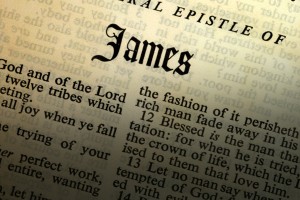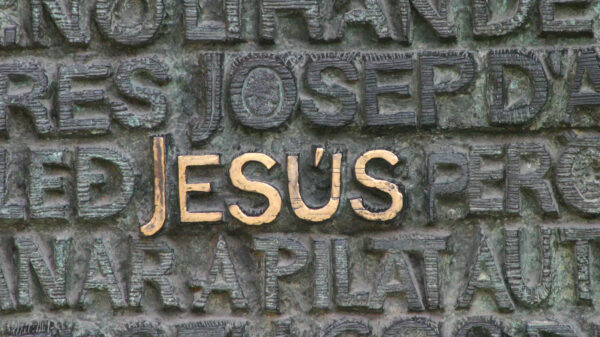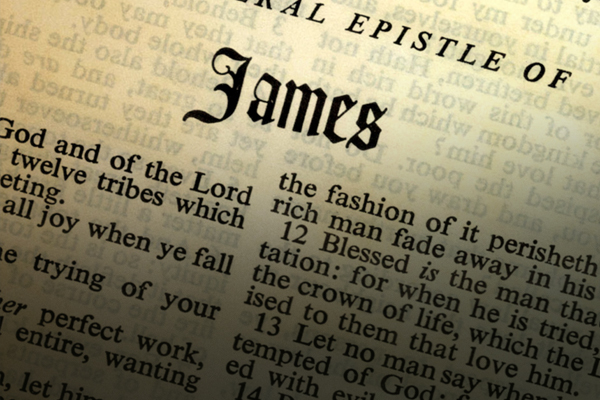
The Second Apocalypse of James (130-150AD)
Like the “First” Apocalypse of James, this Gnostic text was discovered in 1945 as part of the Nag Hammadi collection in Egypt. Scholars actually date the “Second” Apocalypse of James earlier that the “First”. While the manuscript discovered at Nag Hammadi dates to the 3rd or 4th century, scholars believe that the original text was written in the middle of the 2nd century. The Second Apocalypse of James was written as a reported dialogue between Jesus and James the Just (Jesus’ brother) and allegedly recorded by a priest named Mareim.
Why Isn’t It Considered Reliable?
Like other Gnostic texts, this document first appears well after the death of the living eyewitness it reportedly represents (James). Scholars do not believe that James is actually the author of the text, and the Gnostic nature of the document fits well within the catalogue of late, heretical, Gnostic texts rejected by the early Church Fathers.
How Does It Corroborate the Life of Jesus?
In spite of this, the Second Apocalypse of James acknowledges several truths from the canonical Gospels. Jesus is referred to as “Lord”, the “righteous one”, the “life” and the “light”. He is described as the judge of the world who attained a multitude of disciples while here on earth. He is acknowledged as a wise teacher who is the source of spiritual wisdom from God.
Where (and Why) Does It Differ from the Reliable Accounts?
The Second Apocalypse of James is presents a Gnostic view of Jesus, “rich in knowledge”, with a “unique understanding, which was produced only from above” that is “hidden from everyone”. Gnosis is the mechanism through which mortal humans are to be “saved”. There is some confusion in the text as to the relationship being described between Jesus and James. While the First Apocalypse of James clearly describes them as biological brothers of a sort, this text does not seem to affirm the relationship. Interestingly, there is also a scene in the text where Jesus kisses James on the mouth in a manner that is similar to the way that Jesus kisses Mary in the Gospel of Philip. Jesus also calls James His “beloved” here. The text appears to describe this form of kissing as a metaphor for the passing of Gnostic wisdom, and the context of this text coupled with the Gospel of Philip supports this understanding.
The Infancy Gospel of James (140-170AD)
The Infancy Gospel of James (also known as “The Gospel of James” or “The Protoevangelium of James”), is believed by scholars to have been written in the 2nd century. It was very popular during its day and approximately one hundred thirty ancient manuscripts have survived. The earliest copy of the Infancy Gospel of James is a text discovered in 1958 and dating to the 4th century. The manuscript describes the birth and life of Mary, her pregnancy, and the birth of Jesus. It is the earliest non-canonical document to openly claim that Mary was a perpetual virgin (never having had sex with a man, neither before nor after the birth of Jesus).
Why Isn’t It Considered Reliable?
The Infancy Gospel of James claims to have been authored by James the Just, the half-brother of Jesus and son of Joseph from a prior marriage. But scholars have observed the author of the text appears to know little or nothing about the Jewish customs of the 1st century. James would certainly have been familiar with these customs. The Infancy Gospel of James was first mentioned by Origen in the 3rd century. He considered the text to be untrustworthy and said that it was a late heretical work. Pope Gelasius condemned the text in his 5th century “Gelasian Decree”, describing it as one of the books “to be avoided by catholics”. The Infancy Gospel of James is by all accounts a late text, and was not written by James or any eyewitness to the account it describes.
How Does It Corroborate the Life of Jesus?
In spite of its condemnation from the earliest orthodox Church Fathers, the text does affirm a number of elements found in the reliable Gospels. The text acknowledges the identity of Mary and Joseph as Jesus’ parents and the sequence of events leading up to the birth of Jesus, including the angel’s visit to Mary, the virgin conception of Mary, the angel’s declaration of this fact to Joseph in a dream, and the census that caused Joseph and Mary to travel to Bethlehem. It also affirms the arrival of the Magi, the sequence of events that led them to find the Christ child, and the response of Herod when the Magi did not return to him.
Where (and Why) Does It Differ from the Reliable Accounts?
The Infancy Gospel of James adds a number of details to the story of Mary and Joseph and the birth of Jesus. Like other apocryphal authors of the 2nd century, the writer of this text was also interested in satisfying the curiosity of those who were interested in those areas of the canonical Gospels where detail was lacking. These fictional details often became part of the legends surrounding Jesus. The Infancy Gospel of James includes narratives describing Jesus being born in a cave rather than a stable, describing Joseph as a man who was significantly older than Mary when Jesus was born, and describing Mary as a perpetual virgin.
The Apocryphon of James (150-180AD)
The Apocryphon of James is a mid to late 2nd century text claiming to contain the secret teaching of Jesus to James and Peter following the resurrection, but prior to the ascension. It was first discovered in Egypt along with other Gnostic documents in the Nag Hammadi collection in 1945, and only one damaged copy has ever been discovered.
Why Isn’t It Considered Reliable?
Scholars once again date this text far too late to have been written by any eyewitness to the life of Jesus. It was discovered along with other Gnostic texts, many of which are Sethian, and the Apocryphon of James also uses Gnostic terminology. The text fits well within the other heretical late writings that Irenaeus described as “forged, to bewilder the minds of foolish people, who are ignorant of the true scriptures.” Interestingly, the Apocryphon of James, like the Gospel of Mary, describes Peter as incapable of understanding the teaching of Jesus. It is as if the writer of the Apocryphon sought to legitimize his own heretical, secret teaching to James and Mary by attacking the orthodoxy of Peter.
How Does It Corroborate the Life of Jesus?
The Apocryphon of James acknowledges many claims of the canonical Gospels, even as it distorts and adds to the orthodox eyewitness accounts. The text presumes Jesus lived, died on the cross, and was resurrected (after which the dialogue of the text is supposed to have occurred). It also acknowledges Jesus had twelve disciples, and the life of Jesus was eventually recorded by these disciples. Jesus is described as the “Son of Man” and His death on the cross is mentioned. The Apocryphon also affirms that Jesus spoke in parables to his disciples, and it even recalls the parables of “The Shepherds”, “The Seed”, “The Building”, “The Lamps of the Virgins”, “The Wage of the Workers”, “The Double Drachma” and “The Woman” by name.
Where (and Why) Does It Differ from the Reliable Accounts?
The text is clearly influenced by Gnostic notions related to the power of knowledge with regard to Salvation. Jesus reportedly tells James the secret knowledge He is giving James is necessary for Salvation: “blessed are those who are saved through faith in this discourse.” Jesus tells both James and Peter they should desire to be “filled” with special knowledge and he calls them aside from the other disciples to provide them with this privileged teaching. This is consistent with the high regard Gnostics had for secret, esoteric knowledge.
The First Apocalypse of James (250-325AD)
This document was also discovered in 1945 along with other Gnostic texts as part of the Nag Hammadi collection in Egypt. As described earlier, the “First” Apocalypse of James actually dates later than the “Second” Apocalypse of James and purports to be a dialogue recorded between Jesus and James the Just (Jesus’ brother). The contents of the document include an inference related to the crucifixion and a series of spiritual “passwords” are provided by Jesus so James might ascend to the highest heaven.
Why Isn’t It Considered Reliable?
Scholars agree this text appears in history no sooner than the middle of the 3rd century. As a result, it simply cannot have been written by James or anyone else who lived early enough to have witnessed the reported dialogue. Scholars also recognize the existence of theological principles within the text very similar to Valentinian Gnosticism. The teaching of Valentinus (a Gnostic teacher who lived from 100-160AD) was condemned by Irenaeus and Epiphanius, and it is reasonable to assume this text was similarly received.
How Does It Corroborate the Life of Jesus?
In spite of its Gnostic inclinations, the First Apocalypse of James does acknowledge a number of canonical truths about Jesus. Jesus is described as a wise teacher who possesses the knowledge of God and the secrets of heaven. He is called “Lord” and “Rabbi” and He is described as having many disciples and followers; Salome, Mary and Martha are mentioned by name. The crucifixion is also inferred and the martyrdom of James is mentioned in the closing lines of the text.
Where (and Why) Does It Differ from the Reliable Accounts?
The Gnosticism of the First Apocalypse of James is evident in the manner in which secret, esoteric knowledge is revered and described as the key to ascending to the highest heaven. Like other Gnostic texts, this document describes Jesus more as the revealer of this saving wisdom than as the sacrificial redeemer, although His suffering is inferred. The theology of the First Apocalypse of James centers on the idea salvation is simply the liberation of the soul from the burden of its material, mortal existence. This salvation is attained through the secret wisdom provided by texts such as these.
As with other non-canonical documents we’ve examined (and will continue to examine over the next weeks), there’s an emerging pattern related to dating and accuracy. Earlier documents tend to be more orthodox in their presentation of Jesus than later texts. As time progressed, religious sects of one kind or another co-opted the person of Jesus and “reshaped” Him to fit their particular theological perspective. The later the non-canonical text, the more dramatic the “reshaping”. That’s why the first question we must ask any eyewitness is simply, “Were you really there to see what it is you said you saw?” That’s also why we can trust the New Testament Gospels are the only true eyewitness accounts related to the life, ministry, death and resurrection of Jesus.

J. Warner Wallace is a Dateline featured Cold-Case Detective, Senior Fellow at the Colson Center for Christian Worldview, Adj. Professor of Christian Apologetics at Talbot School of Theology, Biola University, author of Cold-Case Christianity, God’s Crime Scene, and Forensic Faith, and creator of the Case Makers Academy for kids.
Subscribe to J. Warner’s Daily Email
J. Warner Wallace is a Dateline featured cold-case homicide detective, popular national speaker and best-selling author. He continues to consult on cold-case investigations while serving as a Senior Fellow at the Colson Center for Christian Worldview. He is also an Adj. Professor of Christian Apologetics at Talbot School of Theology, Biola University, and a faculty member at Summit Ministries. He holds a BA in Design (from CSULB), an MA in Architecture (from UCLA), and an MA in Theological Studies (from Gateway Seminary).

































Pingback: What is the Infancy Gospel of James all about? – CCon Literature Blogs
Pingback: Non – Canonical & heretical written sources – 1c15
Pingback: Protoevangelium of James – 1c15
Pingback: The Second Apocalypse of James – 1c15
Pingback: The Apocryphon of James – 1c15
Pingback: The First Apocalypse of James – 1c15
Richard
January 6, 2022 at 9:39 am
Great content, objective & concise. Congrats